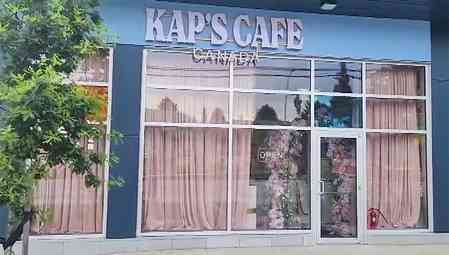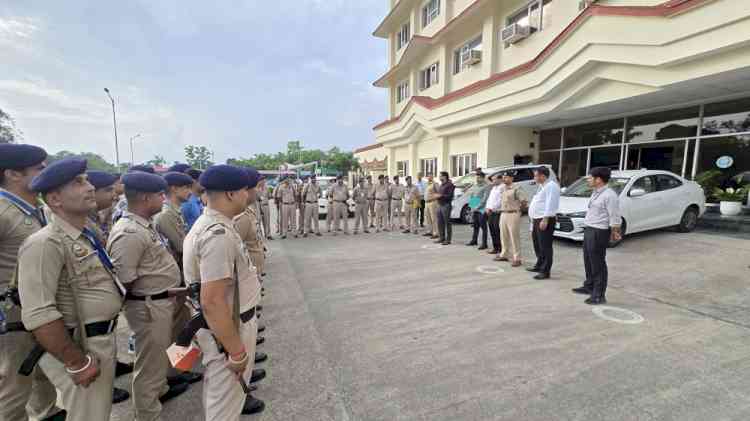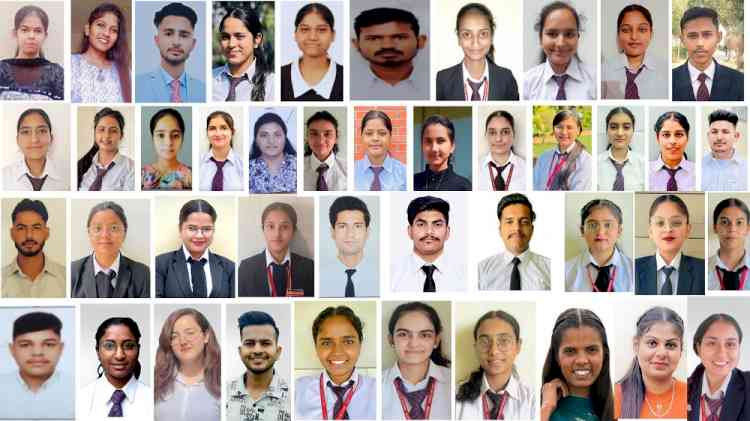Opinion: EVERY year 18000 MTs foodgrain is rotten in country
The Author. Punjab is one of the most fertile regions on earth and major part of the economy depends upon agriculture. In Punjab, five procurement agencies, Pungrain, Punsup, Markfed, Warehouse, Punjab Agro and FCI are operating. Food Corporation...
The Author.
Punjab is one of the most fertile regions on earth and major part of the economy depends upon agriculture. In Punjab, five procurement agencies, Pungrain, Punsup, Markfed, Warehouse, Punjab Agro and FCI are operating. Food Corporation of India is the ultimate buyer from all other agencies for Central Pool stocks for arranging movement to the deficit States.
Every year thousands of tons of wheat stored in open is damaged and despite directions of the Supreme Court, the foodgrains have not been distributed to the poor families.
Normally, we see that vegetables purchased from the wholesale dealers by the vegetable vendors try to sell the same within two days and they manage to get in return the cost and profit as well within thetwo days and on the third day, instead of selling the vegetable at the cheaper rates, give the same as feed to the animals or throw at the dumping sites. Meaning thereby, they don’t sell the vegetables at the cheaper rates because the next day the customer would not come to purchase the vegetable from them. It is their professional thinking. There is now no difference between Centre Government and Vegetable Sellers as the government too have become professional. This is the reason that thousands of tons of wheat is rotting in the godowns or in the open storage instead of pass on the surplus foodgrain to the poor.
In fact, the states which are having the maximum production of wheat crop like Punjab which is known as the ‘Food Basket” of India are facing serious problem of wheat storage. The godowns in the whole of the nation are full of foodgrains and with the arrival of new crop; there is no space to store the same. This issue has been raised in the Parliament also by MP from Bahtinda Harsimrat Kaur Badal, to make arrangements for the vacation of godowns in Punjab. She has repeated number of times that 68 lac MTs wheat and 46 lac MTs rice stored in the Punjab godowns should be vacated by arranging movement to the deficit states.
In addition, the paddy stocks are also lying in the open which are yet to be converted into rice. The wheat has started arriving in the market and there is no space for its storage which can create a major problem for the Punjab Government as well as for the farmers. But the Centre Government is still mum over the issue. Even Sushma Swaraj has also pointed out about this problem and criticised the centre government on this issue.
As per her version, every year about 18,000 MTs foodgrain is rotten in the godowns which is not fit for human consumption instead government has to incur crores of rupees for preserving it. She too have earlier also reminded the government about this burning issue and now the problem is this, the foodgrains brought to the mandis by the farmers of Punjab and MP, don’t have empty gunny bags to fill-up the grains besides non-availability of godowns to store the filled bags due to slow movement of the same to the other states. It is such a serious issue that it cannot be ignored at any cost. The states of Punjab, Haryana and MP are playing a major role in filling the national basket of foodgrain but the situation is that the farmers of these states are facing problem to sell their produce in the mandis.
The centre government should understand that the state governments procure the wheat, rice and paddy for the central pool and its storage problem is of centre and not of the states. It also includes in the list of responsibilities of centre government to make arrangements for empty gunny bales to fill the grains and godowns for its storage, the state governments are simply agents for procuring the same.
The condition of the existing covered godowns, are so dilapidated that there is a need to keep a special budget for renovating the existing storage capacity by all the agencies. In fact, the government has not learned the lesson from the past and the situation is set to repeat itself in the years to come.
As per the guidelines and norms fixed by the Central Government, preference should be given to those godowns which are within a radius of eight kilometers of the railhead. This is done to reduce the transportation cost, cut down hassles and reduce the time taken to transport foodgrain between the grain market, godown and the railhead.
In the absence of non-availability of any covered scientific storage, the agencies are left with no other alternative except to store the stocks in the lanes, roads of existing godowns, which are not free from natural vagaries and theft.
Renowned scientist MS Swaminathan has already recommended to the Central Government to set up grain storage facilities at 150 locations in the country each with a capacity of a million tones. He has said to this extent that it is unfortunate that we waste grain when our countrymen sleep on an empty stomach. He after touring various procurement centres has also suggested that silos be built for long term storage to prevent deterioration and rotting of foodgrain on account of delays in transferring the same to consumption states. He has suggested that Rs.6000 crore should be spared by the state government for the construction of metallic grain silos. Though it is a good proposal yet it is peanuts in the face of some twenty million tones of food grains procured by the state on behalf of the Central government every year.
The centre government should chalk out a programme to dispose off the grains rotting in the godowns through auction atleast for use of cattle feed being unfit for human consumption or throw it in the sea which is not even fit for animals so that godowns are vacated to accommodate the new crops besides making arrangements for its movement to the deficit state well before the start of the next season. The stocks should be moved to those states where there is too much need and poor people are becoming the victim of starvation death. There is also a need to review the public distribution system (PDS) to meet the demands of the people and there is no problem of storage of foodgrains during the season.
A detailed in depth study was made to know the root cause of the problem of storage space. Since foodgrain is a perishable item and has limited self life, the need of the hour is to change the focus from production to scientific storage, to save 15-20 per cent foodgrains which go waste every year or it is not fit for human consumption. Easy and fool proof solution is that the private sector and stage governments should become active players in arranging storage space to save the grain from rotting. In view of the fact that storage space cannot be created instantly, it would be better to issue the grains to flour millers and traders who have covered storage space in a transparent and market friendly manner.
The reason for the failure to hire more storage is the rates being offered for the covered storage are too low despite the fact land prices have touched Rs.50 lakh per acre even in the remote districts. To make it more attractive now, the present guarantee of taking the storage on rent should be for a longer period, to enable the owner of the godowns to repay the bank loan. Only then the people will come forward to construct the godowns otherwise such a heavy investment can give a better return if kept in the bank on fixed deposits.
A new policy of warehousing know as People Entrepreneur Godown (PEG) has been introduced with Nodal Agency as Pungrain as an out-sourcing agency. From the face of scheme, it looks to be good in view of shortage of staff with almost all the agencies and having no covered accommodation but it is not understood as to why the long term impacts have not been studied.
This out-sourcing has already been tried by one of the agency in Punjab and was totally failure despite payment of heavy storage charges. The embezzlement of scam of about Rs.7 crores by the out-sourcing agency, have been detected and it is likely to be increase in four folds, thus causing ever biggest loss, in the state. Giving such heavy stocks to the private agency for storage against a nominal bank guarantee is not at all advisable.
In the instant PEG scheme, two types of storage have been introduced, one; with custody and preservation of stocks and second; without custody and preservation by the agency. In both the cases, the involvement of the godown owner and possibilities of repeating the history of a big scam, cannot be ruled out. It would have been more appropriate, if the procuring agencies itself had constructed the covered storage space and recruited the regular staff for storage and security purposes.
Thus, the major reasons behind the shortage of scientific storage space is that the storage charges being paid to godown owners are very low rather insufficient to repay even the loans against the investment in view of rice in cost of land and construction. Only the revision of storage charges would encourage more people to construct scientific storage space only as the wheat stored scientifically on plinths in the open is susceptible to damage if not moved out within a year.
Till such time, any policy to revise the storage charges to attract the new builders, the government should not hesitate to store the stocks on raised plinths or wooden crates with good quality CAP storage, to keep intact the stocks at least for one year, besides improving the slack movement by the FCI strictly on the “first in first out”to the needy states.
The storage of grains needs to be made a ‘case study project’to be examined, not by the university experts, who normally submit their reports while sitting the air-conditioned reports, but with the association of experiences from the procurement agencies, to come out with a concrete solution, to save the grains, in times to come.
(Disclaimer: The views expressed by the author in this article are his own and do not necessarily reflect the views of City Air News.)


 cityairnews
cityairnews 









